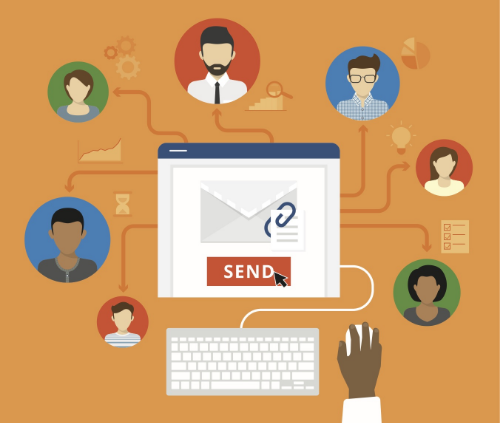
Contrary to what you may have heard, email marketing is not dead. Not only is email marketing still alive and kicking, it continues to maintain its status as an effective lead generation channel for organizations of all types, including nonprofits.
About seven years ago, many communication experts predicted the imminent death of email marketing with the emergence of social media. As it turns out, social media has not replaced email, but rather it has formed a synergistic relationship with email. In fact, most savvy marketers recognize social media and email as two marketing fundamentals that are vital to the success of their campaigns.
With the help of mobile device optimization, email remains a fast, low-cost, and effective way for nonprofits to communicate with diverse segments of their audiences on a consistent basis.
Below are 5 ways nonprofits should use email to connect with supporters.
1. Welcome new supporters and build awareness for your nonprofit.
Consider setting up an automated workflow that triggers a welcome email as your initial communication to new supporters who have joined your email list via blog subscription, event attendance, first time donation, or other means. Your welcome email should provide a brief overview of your nonprofit and educate new supporters about your cause, mission, and opportunities to get involved. Be sure to include links to your website and social media like/follow buttons in this email, as well as in all subsequent emails.
2. Raise funds for your cause.
Whether your fundraising effort is focused on a specific event or a seasonal giving campaign, your email should be crafted specifically for the audience you are targeting. Contact database segmentation is critical to email marketing success. Include a clear call-to-action with a link that directs your contacts to either your donation page or an event registration page as the next step in the giving transaction process.
3. Distribute your e-newsletter.
If your nonprofit hasn’t taken steps to transition its monthly or quarterly print newsletter to a digital format yet, then listen up. NOW IS THE TIME!
Not only are email newsletters easier and less expensive to produce than printed direct mail, there’s an added advantage of including direct links to donation pages, event registration pages, and even to your website pages. And like social media, email makes it easy for your supporters to share your newsletter with others to spread the word about your nonprofit and cause.
4. Thank your supporters.
Email is a simple way to quickly let your donors know how much you appreciate their generous support. Set up a donor nurturing campaign with an email workflow that triggers an automatic thank-you email to supporters who have submitted the form on your donation page. Don’t forget to invite new donors to join your email list to receive your e-newsletter and to learn about upcoming events and opportunities to get involved with your cause.
5. Follow up with your donors.
When a supporter makes a donation, registers for an event, or requests information about your organization, keep the conversation flowing with a follow-up email. An automated donor or lead nurturing workflow will allow you to trigger targeted follow-up emails based on your supporters' actions or requests. For example, a follow-up email to donors might include a short description of how their gift has been used to directly impact lives. Or a follow-up email to new contacts might provide details about an upcoming event or additional information about your organization.
Download a free copy of our workbook to start finding new social media prospects for your nonprofit.


